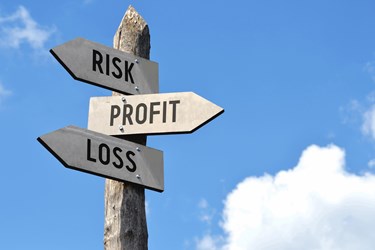Invert Your Sales Risk: How As-A-Service Models Strengthen A VAR's Offer
By Robert Cooper, Managing Director at Wildix Inc.

In the modern sales environment, it’s more important than ever for a VAR to be able to concretely identify what their added value actually is.
With the advent of digital disruption, big vendors and manufacturers threaten to make the role of a pure reseller obsolete. Now, vendors can take their IT equipment right to the end user through agents, online portals and their direct sales force, eliminating the additional costs that come with using a Channel VAR, or, more appropriately, an MSP.
That change gives customers a choice in their purchase: either they buy directly from the products’ designers, or they presumably pony up a higher fee to go through the channel. As a result of the Cloud and greater product homogenization, solutions are now far less differentiated—with that lack of clear difference, the customer’s decision will come down to price.
Increasing the value of your offer, then, is now less a matter of relying on old-school IT sales tactics and more a matter of changing the rules of the game entirely. More precisely, it involves recognizing how the modern customer’s purchasing decision factors in the overwhelming pace at which manufacturers create new products.
A Disrupted Market
Today’s constant rollout of new devices and fresh updates has significantly changed the customer’s buying philosophy. Before, purchasing an IT product was seen as a natural investment, with clear differentiation and self-evident lasting value. But now, with a new release always waiting around the corner, customers see more risk in their purchase. If their pricey phone, DECT, or call center software is going to depreciate in value when the next update arrives in a few months, what’s the point in buying one at all?
On the VAR’s side of things, this risk factor only adds to the uphill battle you face in winning over prospects. Although yesterday’s CAPEX-based approach (centered around installation and management services) has put VARs over the finish line in the past, nowadays, that promise has lost all of its value when the alternative is simply a lower cost.
Services Are The Solution
The question now, of course, is how do you go about addressing those problems.
Luckily, the answer is easy: don’t play into them at all.
Simply put, market disruption has made old sales methodologies a losing formula. Now, consumers are looking for more than a one-and-done investment in technology; they’re interested in ongoing value that can help them achieve their business goals.
Customers just don’t see that kind of bang for their buck in traditional product sales—certainly not at the price a VAR has to sell them at, anyhow. What they find far more appealing, however, is the lasting benefit of as-a-service sales.
Selling as a service isn’t what you’d call a new phenomenon, of course. Considering how many Netflix and Salesforce accounts are active right now, I’d bet a good number of people reading this article are already using software as service.
But the premise is still worth explaining, especially given how simple it is: rather than sell customers a single program they now own, sell them a license to use the program on a per-month, per-user basis. Bundled into that price, you also offer scalability, technical support, and, most importantly, automatic updates to the latest version of the software.
Although software as a service is the most prominent instance of this sales technique, the model can just as easily be used for hardware. Distinct from a lease or rental, hardware as a service is a matter of again selling access to the equipment, with the same included promise of scalability, support, and replacing old units with new models.
The Value Of Security
This promise of continual updates gives the end user far more security in their investment. Suddenly, obsolescence is a non-issue; in fact, it’s just the opposite. Now, in addition to the immediate value of the products they currently use, the customer is also investing in the value of updates they’ll receive in the future.
This definite value also gives the VAR an enormous advantage in the sales process. After all, ongoing updates can be leveraged as part of the value in a software-hardware bundle, as they bring the all-important benefit of lasting purpose directly into the offer. In effect, the VAR who sells as a service inverts the risk in the customer’s purchase of IT products.
It’s the VAR’s ability to turn the risk factor on its head that will make them able to stand out in the current market situation. Through ongoing updates and lasting security, both of which only as-a-service sales can provide, the role of the VAR can continue to be not only relevant but highly valuable. Although technology is certain to change, there will always be a need for someone who can guide consumers through that disruption. It’s only by providing that guidance and ongoing support that the reseller can reliably add value to their offer.
About The Author
 Robert Cooper is the Managing Director of Wildix, Inc., where he leads the charge toward a channel-focused approach to Unified Communications. In addition to his military background, he has over 20 years of experience in leading technology sales teams and has served on the White House Conference on Small Business.
Robert Cooper is the Managing Director of Wildix, Inc., where he leads the charge toward a channel-focused approach to Unified Communications. In addition to his military background, he has over 20 years of experience in leading technology sales teams and has served on the White House Conference on Small Business.
